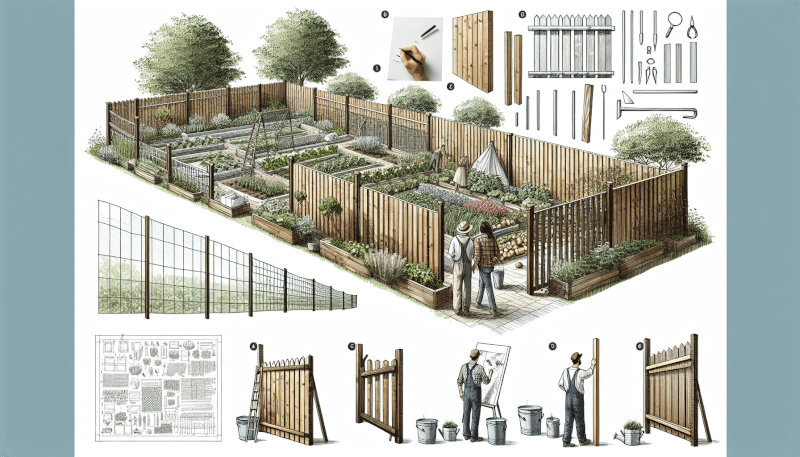Have you always dreamed of having your own vegetable garden, but worry about pests ruining your plants? Look no further, because this DIY guide will show you how to build a custom vegetable garden fence to protect your plants and keep them thriving. With simple instructions and easy-to-follow steps, you’ll be able to create a beautiful and functional fence that not only keeps pests out but also adds a stylish touch to your garden. Say goodbye to pesky critters and hello to a bountiful harvest with this handy DIY guide.

Choosing the Right Location
Considering sunlight and shade
When choosing the location for your vegetable garden fence, it is important to consider the amount of sunlight and shade the area receives. Most vegetables require at least six hours of direct sunlight each day, so you want to choose a spot that gets plenty of natural light. Additionally, some vegetables like leafy greens and root crops can tolerate partial shade, so it’s important to strike a balance between sun and shade in your chosen location.
Checking soil quality
Before building your vegetable garden fence, it is crucial to check the quality of your soil. Vegetables thrive in well-draining soil that is rich in organic matter. Take a sample of your soil and have it tested for nutrient levels and pH balance. This will help you determine if any amendments are needed, such as adding compost or adjusting the soil pH. By ensuring that your soil is of high quality, you are setting your vegetable garden up for success.
Measuring the area
Once you have identified a suitable location for your vegetable garden fence, it’s time to measure the area. Use a measuring tape to determine the length and width of the space you plan to enclose. This will help you calculate the amount of fencing material you will need and assist in planning the layout of your garden. Don’t forget to take into account any existing structures or obstacles that may affect the placement of your fence.
Designing Your Fence
Determining the height and length
When designing your vegetable garden fence, you need to determine the appropriate height and length for your needs. The height of your fence should be determined by the type of vegetables you will be growing. For example, if you are growing climbing plants like tomatoes or beans, you may want a taller fence to provide support. The length of your fence will depend on the size of your garden and the amount of perimeter you need to enclose.
Selecting the fence material
There are various types of materials to choose from when selecting the material for your vegetable garden fence. Popular options include wood, vinyl, and metal. Wood fences offer a natural and rustic look, while vinyl fences are low-maintenance and durable. Metal fences, such as wire mesh, offer excellent visibility and protection against pests. Consider the pros and cons of each material and choose the one that best suits your needs and aesthetic preferences.
Choosing the style and aesthetics
While the primary purpose of your vegetable garden fence is to protect your crops, there’s no reason why it can’t be visually appealing as well. Consider the overall style and aesthetics you want to achieve. Do you prefer a traditional picket fence or a more modern and sleek design? Additionally, think about how the fence will blend with the surrounding landscape and any existing structures. By choosing a style and aesthetic that complements your garden, you can create a cohesive and inviting space.
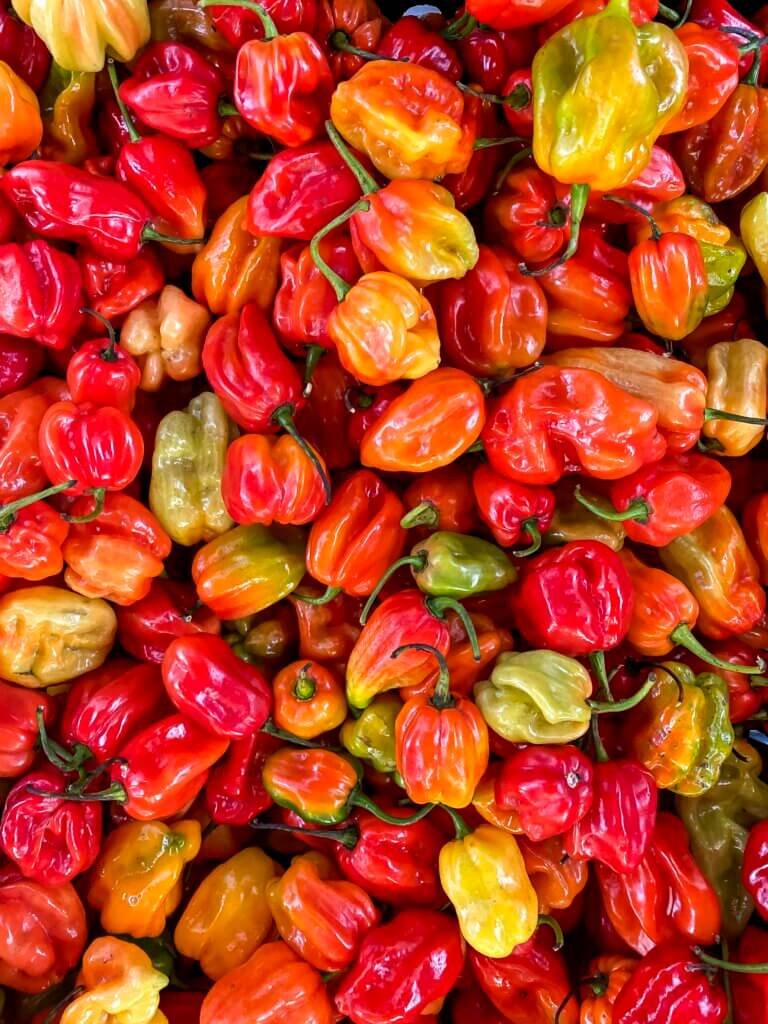
Gathering Materials and Tools
List of required materials
Before you begin building your vegetable garden fence, it is important to gather all the necessary materials. Here is a list of commonly required materials for a standard fence:
- Fence posts (wooden or metal)
- Fencing material (wooden panels, wire mesh)
- Cement or gravel for post hole stabilization
- Nails, screws, or other fasteners
- Hinges and hardware for gates
- Protective sealants or paints (optional)
Make sure to take accurate measurements of your garden area and consult with a professional at a local hardware store to determine the exact amount of materials you will need for your specific project.
Essential tools for the project
In addition to the materials, you will need several tools to successfully build your vegetable garden fence. Here are some essential tools you may require:
- Post hole digger or auger
- Level
- Saw (for cutting wooden panels or posts)
- Screwdriver or drill
- Measuring tape
- Hammer or nail gun
- Shovel or spade
- Protective gloves and safety glasses
Having these tools on hand will ensure a smooth and efficient fence-building process.
Optional accessories or decorations
While not necessary for the functionality of your vegetable garden fence, adding optional accessories or decorations can enhance its overall appearance. Consider incorporating trellises or planters along the fence to support climbing plants or add pops of color with hanging baskets. You can also install solar-powered lights to illuminate the fence at night or attach decorative elements like wind chimes. These optional additions allow you to personalize and customize your garden fence to reflect your unique style and taste.
Preparing the Ground
Clearing the area
Before you begin building your vegetable garden fence, it is essential to clear the area of any debris, plants, or obstacles. Remove rocks, branches, and other objects that may impede the fence installation process. Trim back any overhanging branches or vegetation to create a clean and open space for your garden.
Leveling the ground
To ensure a level fence installation, it is important to level the ground in your garden area. Use a shovel or spade to remove any excess soil or create a smooth surface. Check for any uneven areas and use a level to make adjustments as needed. A level ground will provide stability and ensure that your fence stands straight and true.
Removing weeds and grass
Weeds and grass can easily grow through the gaps in your vegetable garden fence, so it is crucial to remove them before installation. Use a weed trimmer or hand tools to clear away any vegetation along the perimeter of your garden. If necessary, apply an herbicide to prevent regrowth. By eliminating weeds and grass, you will minimize the competition for nutrients and promote the healthy growth of your vegetables.
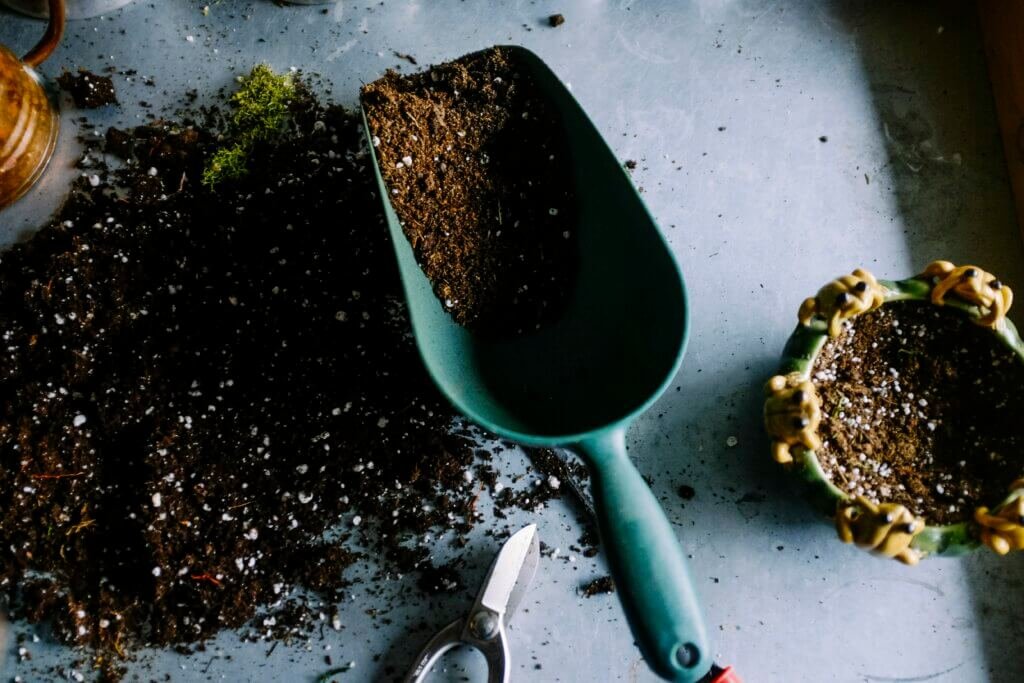
Building the Fence Framework
Digging post holes
To establish a sturdy foundation for your vegetable garden fence, you need to dig post holes. Use a post hole digger or auger to dig holes at regular intervals along the perimeter of your garden. The depth and spacing will depend on the type of fence and the soil conditions in your area. As a general rule, the holes should be approximately one-third of the height of your fence posts. Take care to dig the holes evenly and ensure they are straight to maintain the structural integrity of the fence.
Installing wooden or metal posts
Once the post holes are dug, it’s time to install the fence posts. If using wooden posts, position them in the holes and make sure they are level and plumb. Use a spirit level to check for accuracy. For metal posts, insert them into the holes and secure them with concrete or gravel for stability. Allow the concrete to dry according to the manufacturer’s instructions before proceeding.
Attaching horizontal rails
To create the framework for your vegetable garden fence, you will need to attach horizontal rails to the posts. These rails provide support for the fence panels and help maintain the overall structure. Use nails or screws to secure the rails at regular intervals along the length of the fence. Make sure the rails are level and flush with the top and bottom of the posts. This step is crucial in ensuring the durability and stability of your fence.
Securing the Fence Panels
Choosing the panel type
When it comes to fence panels for your vegetable garden, there are several options to consider. Wood panels offer a natural and traditional look, while wire mesh panels provide optimal visibility and protection against pests. Alternatively, you can use a combination of both materials to suit your specific needs. Consider the level of privacy and security you desire, as well as the overall aesthetic you want to achieve.
Installing the panels
Once you have chosen the type of panel for your vegetable garden fence, it’s time to install them. Position the panels between the posts, ensuring they are level and plumb. Use nails or screws to secure the panels to the horizontal rails. Make sure to leave a small gap between each panel to allow for expansion and contraction due to temperature changes. This step may require additional assistance to hold the panels in place while attaching them to the frame.
Trimming or cutting panels if necessary
In some cases, you may need to trim or cut the fence panels to fit the dimensions of your vegetable garden. Use a saw or appropriate cutting tools to make any necessary adjustments. Take accurate measurements and mark the panels before cutting to ensure a precise fit. Make sure to wear protective gloves and follow safety guidelines when using sharp tools. Once the panels are trimmed, secure them to the frame and ensure they are level and securely attached.
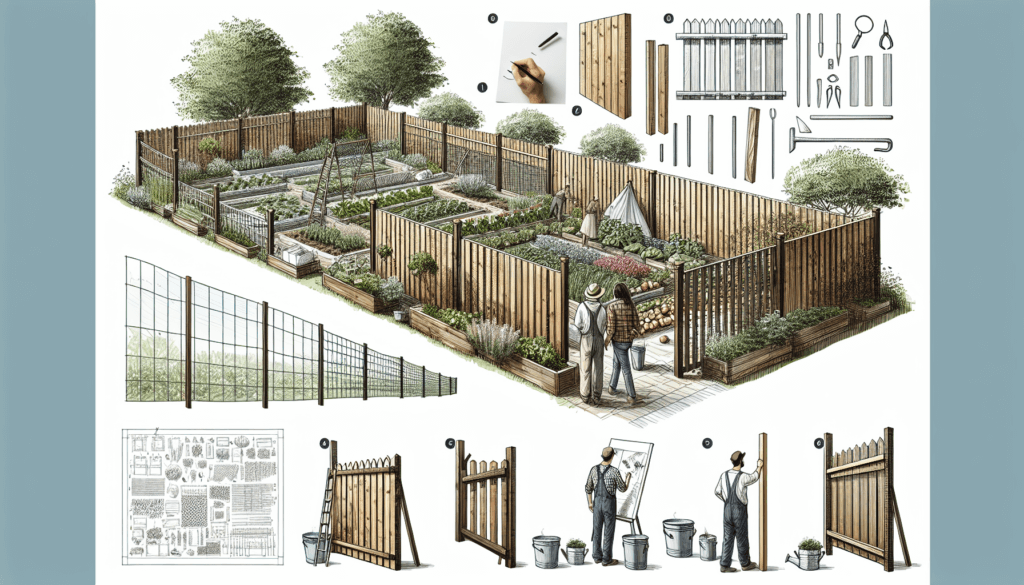
Adding Gates and Entrances
Deciding on gate location
Adding a gate to your vegetable garden fence provides convenience and accessibility. Determine where you would like the gate to be located based on your garden layout and how you plan to access and maintain your crops. Consider the natural flow of your garden and any existing pathways or structures. Additionally, ensure that the gate location allows for easy movement of tools, wheelbarrows, and other equipment.
Installing gate hardware
Once you have decided on the gate location, it’s time to install the necessary hardware. This includes hinges, latches, and handles. Choose hardware that is durable, weather-resistant, and appropriate for the size and weight of your gate. Follow the manufacturer’s instructions for proper installation. Take care to ensure that the gate swings freely, latches securely, and aligns properly with the fence and posts.
Constructing an arbor entrance
For a more decorative and visually appealing entrance to your vegetable garden, consider constructing an arbor. An arbor provides a focal point and adds charm to your garden space. Use wooden posts or metal stakes to create the arbor structure and secure it firmly in the ground. Add lattice panels or climbing plants to create a beautiful and inviting entrance. Customize the arbor with paint or stain to coordinate with your fence and overall garden design.
Protecting Against Pests
Installing critter-proof fencing
Protecting your vegetable garden from pests is essential to ensure healthy and abundant crops. Install critter-proof fencing to keep out rabbits, deer, and other animals that may munch on your vegetables. Choose a sturdy wire mesh with small enough openings to prevent animals from squeezing through. Bury the bottom of the fence several inches into the ground to deter burrowing animals. By creating a physical barrier, you can minimize the risk of pest damage to your garden.
Using organic pest deterrents
In addition to physical barriers, consider using organic pest deterrents to protect your vegetable garden. Planting companion plants that repel pests, such as marigolds or garlic, can help deter insects. Introducing beneficial insects, like ladybugs or praying mantises, can also help control pest populations naturally. Additionally, using organic pest control products, such as neem oil or insecticidal soaps, can help manage pests without harmful chemicals. By combining different pest deterrent methods, you can create a more pest-resistant environment for your vegetables.
Implementing companion planting techniques
Companion planting is a gardening technique that involves planting certain plants together to benefit each other. By strategically placing compatible plants within your vegetable garden, you can help deter pests and promote healthy growth. For example, planting basil near tomatoes can help repel insects that are harmful to tomato plants. Similarly, planting tall sunflowers alongside corn can provide shade and support for the corn stalks. Explore different companion planting combinations and experiment with what works best for your specific garden.
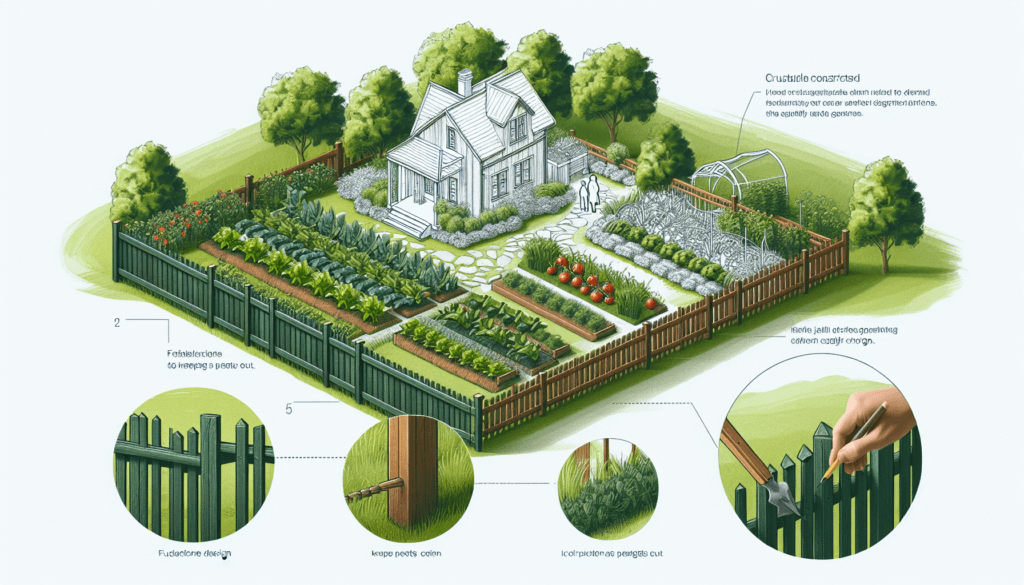
Maintaining and Caring for Your Fence
Regular inspections and repairs
To ensure the longevity and functionality of your vegetable garden fence, it is important to conduct regular inspections and make any necessary repairs. Inspect the fence for loose or damaged panels, posts, or rails. Tighten any loose screws or nails and replace any damaged components. Additionally, check for signs of pest or weather-related damage and address them promptly. By addressing any issues early on, you can prevent further damage and extend the lifespan of your fence.
Staining or painting the fence
Over time, the elements can take a toll on the appearance of your vegetable garden fence. Staining or painting the fence can not only enhance its aesthetic appeal but also provide protection against weathering and rot. Choose a stain, paint, or sealant that is designed for outdoor use and suitable for the material of your fence. Before applying any products, make sure the surface is clean and dry. Follow the manufacturer’s instructions for proper application and allow sufficient drying time.
Weeding and removing debris around the fence
Regular maintenance of the area around your vegetable garden fence is essential to prevent weed growth and maintain a clean and tidy appearance. Remove any weeds or unwanted vegetation that may grow near the fence. Use a weed trimmer or manual tools to cut back overgrown grass or plants. Clear away any debris or fallen leaves to prevent them from accumulating and potentially causing damage to the fence. By keeping the area around your fence well-maintained, you can prevent potential issues and ensure the longevity of your fence.
Creative Ideas for Customizing Your Fence
Adding trellises or planters
Take your vegetable garden fence to the next level by incorporating trellises or planters. Attach trellises to the fence to provide support for climbing plants such as cucumbers, peas, or beans. This not only saves space but also creates a visually stunning vertical garden. Similarly, attaching planters to the fence allows you to grow herbs or flowers, adding pops of color and fragrance to your garden. Get creative with the placement and arrangement of trellises and planters to customize your fence according to your preferences.
Painting mural or decorative patterns
Transform your vegetable garden fence into a work of art by painting a mural or decorative patterns. Let your imagination run wild and create a vibrant outdoor masterpiece. Choose colors that complement your garden and reflect your personality. Incorporate motifs or designs that represent the vegetables or herbs you are growing. This not only adds visual interest but also gives your garden a unique and personalized touch that will surely impress your friends and neighbors.
Incorporating upcycled materials
If you’re looking for an eco-friendly and budget-conscious way to customize your vegetable garden fence, consider incorporating upcycled materials. Use old pallets to create a rustic and charming fence that showcases your creativity. Salvage vintage window frames to add a touch of whimsy and nostalgia. Get resourceful and repurpose materials that would otherwise end up in the landfill. By upcycling, you not only reduce waste but also add character and uniqueness to your vegetable garden fence.

